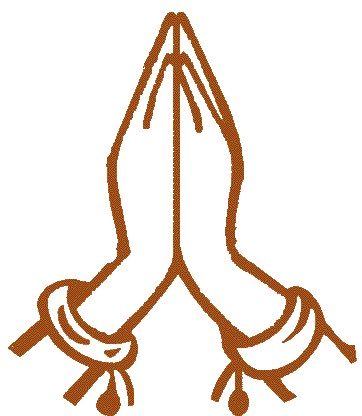NAMASTE FACTS
A non-contact form of salutation is traditionally preferred in India
and Nepal. Namaste is the most common form of such a salutation. When
spoken to another person, it is commonly accompanied by a slight bow
made with hands pressed together, palms touching and fingers pointed upwards, in front of the chest. This gesture, called Anjali Mudra or
Pranamasana, can also be performed wordlessly and carries the same
meaning.(taken from)
Etymology Namaste is derived from Sanskrit and is a combination of
two words, "Nama?" and "te". Nama? means 'bow', 'obeisance',
'reverential salutation' or 'adoration' and te means 'to you' (dative
case of 'you').
Therefore, Namaste literally means "salutations to you"
. 'Namaskar'
is derived from Sanskrit and is a combination of the two words, "Nama?"
and "kaar". As noted above, "Nama?" is a salutation. "Kaar" means 'form'
or 'shape' and refers to the phenomenon that the other entity (person)
presents.
Thus, the older salutation essentially means "I salute [your] form",
which implies an understanding that all beings in this existence are
part of the surface phenomenology of Maya and that beyond the surface,
so to say, all beings are part of Brahman, or the One ultimate essence
that underlies, and is, all.
In the same light, 'Namah' originates from a benevolent unselfishness
or admission ("salutation") of unity in One essence, and, therefore,
'Namaste' can also be interpreted (roughly) as a way of saying
"Not-myself to you" (a benevolent expression of both respect and
impersonality).
Another variation "Not for me,.. but for thee" gives the sense of
doing 'in service' or 'in honor' of the person spoken to, removing any
personal agenda of the speaker.
In India and Nepal, Namaste is a friendly greeting in written communication, or generally between people when they meet.
When used at funerals to greet the guests, the verbal part is usually
omitted. When the hand position is higher, it usually means reverence
for worship.
Thus, the expression with hands placed on top of one's head is usually the sign of utmost reverence or respect.
Meanings and interpretation Pressing hands together with a smile to
greet Namaste – a common cultural practice in India As it is most
commonly used, namaste is roughly equivalent to "greetings" or "good
day", in English, implicitly with the connotation "to be well".
As opposed to shaking hands, kissing or embracing each other in other
cultures, Namaste is a non-contact form of respectful greeting and can
be used universally while meeting a person of different gender, age or
social status.

No comments:
Post a Comment